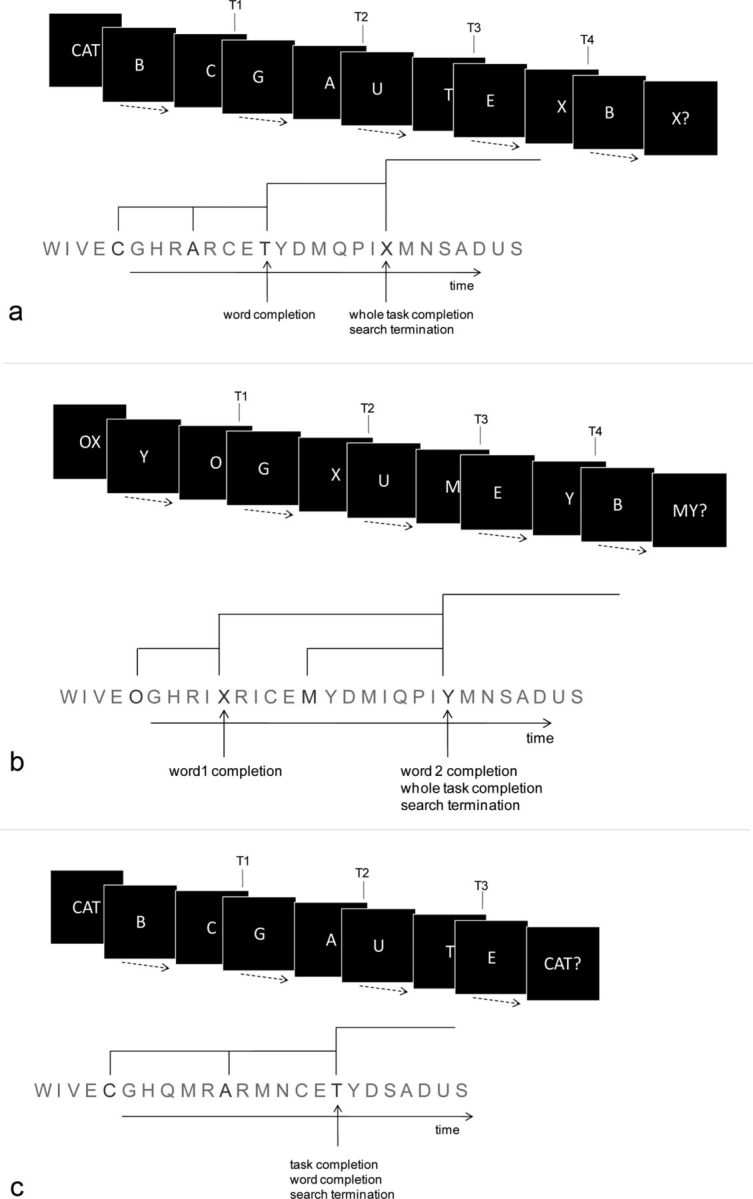Figure 1.

a, Structure of a typical trial in Experiment 1. Trials began with a three-letter cue word. The three letters of this word were to be covertly detected, in the correct order, in the ensuing letter stream; after all three had been detected, search for the letter X began. The complete sequence of four target letters appeared in only half of the trials. The letter stream ended with a probe asking whether the letter X had appeared in the correct sequential position, i.e., following the three letters of the target word. Thus the first two targets (T1 and T2) completed subgoals at the lowest level (component letters of the first target word; level 1); the third target, T3, completed a subgoal at the next highest level (complete target word; level 2), while the fourth target, T4 (X), completed the whole goal of the task (level 3). Dotted arrows indicate the variable number of nontarget letters between initial cue, successive targets, and final probe. b, Structure of a typical trial in Experiment 2. The cue consisted of a two-letter word, the detection of which was followed by detection of the letters of word ‘MY’, the latter being constant across trials. In this scheme T1 and T3 completed a level 1 episode, T2 completed a level 2 episode, and T4 completed the whole task (level 3). c, Structure of a typical trial in Experiment 3, similar to Experiment 1 but with only three targets, T1–T3.
